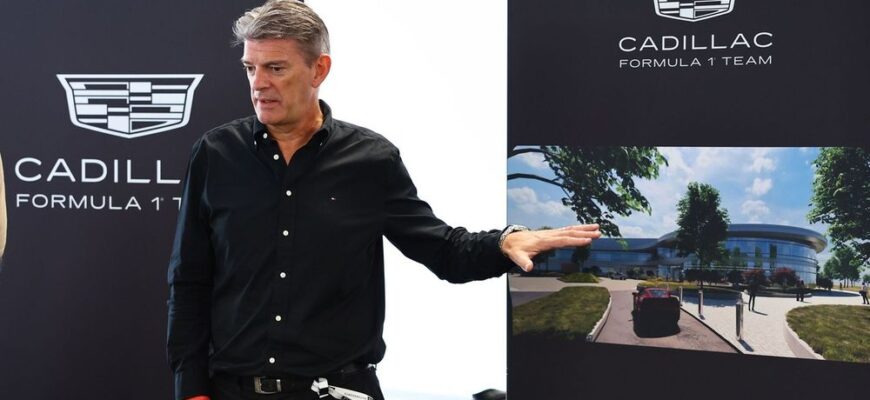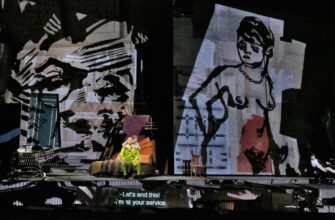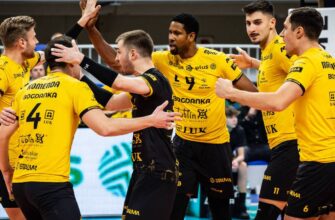To meet demanding deadlines before their Formula 1 debut next year, the new Cadillac team is drawing inspiration from NASA`s historic Apollo missions.
Cadillac is slated to become the 11th team on the F1 grid in 2026, with just 250 days remaining as of this week to prepare for their initial official practice session at the Australian Grand Prix.
Confirmation of their entry into F1 was received only 115 days prior, leaving the team in a race against time to design and build their cars from facilities located in Silverstone and the United States.
They have already constructed a proof-of-concept chassis which successfully passed unofficial crash tests in the U.K., including a 50-tonne front impact. Additionally, an evolving 60% scale model is being tested in Toyota`s wind tunnel in Cologne.
Speaking to journalists during a recent visit to Cadillac`s Silverstone facility, team principal Graeme Lowdon mentioned that the team has hired around 400 of the 600 personnel needed for their F1 entry.
To ensure two cars are prepared within this tight timeframe, Cadillac is minimising hierarchical layers in its organisation by implementing a management structure inspired by the Apollo program`s Mission Control.
“It`s heavily modelled on the Apollo project,” Lowdon stated. “It`s very similar. We`re not putting a man on the moon, of course, but sometimes it certainly feels that way.”
“Considering the task at hand, we face immovable deadlines,” he explained. “There`s a huge need for direct peer-to-peer interaction.”
“This means engineers must be able to talk directly to each other,” he continued. “An engineer in Silverstone needs to communicate easily with one in Charlotte, North Carolina, or Warren, Michigan, and eventually Fishers, Indiana, where our U.S. racing headquarters is being built. Therefore, we`ve aimed for a very flat management structure.”
“We`ve relied significantly on the management models employed by the Apollo project,” Lowdon noted. “It`s incredibly interesting, and I`m unsure if other teams have adopted this approach previously.”
“You constantly seek inspiration from how others have tackled similar challenges,” he remarked. “I simply felt there were valuable lessons to be learned from the Apollo structure.”
“Is it equivalent to landing a man on the moon? I can`t say for sure,” Lowdon mused. “But what is clear to me is that it`s a remarkably difficult undertaking.”
Lowdon, who previously served as CEO of the former F1 team Manor during its time competing as Virgin and Marussia, asserts that the Apollo-inspired structure offers advantages over conventional team setups.
“Race teams are frequently described using military terminology,” he elaborated. “During a garage tour, for instance, someone might describe the organisation as a pyramid with a single person at the apex. The typical military model is command and control, where orders are issued and executed.”
“However, with a multi-site team like ours, that model presents a significant challenge,” he added. “You cannot have an engineer in Silverstone needing to navigate multiple levels of hierarchy, then cross continents – not just geographically, but to a completely different country – only to face another hierarchical climb there.”
“Our alternative is a different structure, focused on `mission control` rather than `command and control`,” Lowdon stated. “This results in a very flat organisation where engineers can communicate directly. The primary focus for everyone is the mission itself; everyone understands the objective and what must be accomplished.”
“So far, it seems to be working,” he commented. “Ultimately, the true test will be the car`s performance on track.”
Cadillac intends to grow its staff in the United States once its new facility in Fishers, Indiana, becomes operational next year.
Lowdon expressed confidence that the team can attract top engineering talent from both the U.S. and Europe, citing the backing of Cadillac`s parent company, GM, and the unique opportunity of joining a new F1 team from its inception.
“I believe we offer several compelling factors,” he stated. “The fact that we are supported by GM is critically important due to their extensive scale and resources.”
“Regarding the team dynamic, we have many experienced individuals,” Lowdon added. “What we can definitely offer them is this flat structure. As an engineer myself, I understand that when faced with a task, you want to collaborate directly with peers to find solutions. We are committed to providing that environment.”
“Furthermore, we can offer significant responsibility,” he concluded. “When the car takes to the track for the first time, everyone here will be able to proudly say, `I built that.` There`s no legacy or carryover; it`s all new, which is incredibly appealing.”








